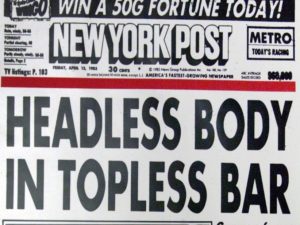

Czechia… except we are landlocked. Poland, then?


Czechia… except we are landlocked. Poland, then?


I just changed one of the existing layouts. Very easy in any text editor, you just need to find the proper name or Unicode code for each function/character.
It’s not that I’m impatient. I’m asking what even is that.


If you’ve seen the car’s back you have its licence plate. You can take a photo of it and record the interaction.


clean
kick nuclear out
Sure…


They invite me to stand in front of their car. That means I get to block traffic without repercussion, and they’ll be charged with assault if they try to stop me.


Be like me and just say BitTorrent.


Living in a country that doesn’t give a fuck:
+100% content
+50% healthcare
+90% safety from mass shootings
–40% salary
–60% job opportunities
–30% cost of living

Bild und Beschreibung im Seitenpanel bitte! Geht es um Satire?


The Catholic Church gets final say to what a miracle is and who becomes a saint. They prefer “false negatives” to “false positives” because their reputation could be compromised. As a result, the investigation is surprisingly rigorous. A ⅔ majority of diverse doctors, including atheists, must agree that there is no possible medical explanation.
There is a recent video by Half as Interesting about this, and many other sources. Please don’t bother me with this; I’m not comfortable defending the church I have happily exited.


something good happens
Specifically, a miracle, a term reserved by the Catholic Church basically only for the most inexplicable good medical outcomes, which ⅔ of independent experts must agree on. Two miracles must happen (or 1 for martyrs) for someone to qualify for sainthood, and it’s still quite a process after that.
In Tschechien gibt es auf Schilder Feld “Verspätung” oder “Erwarteter Abfahrt”, denn Züge oft spät fahren. In Japan werden die rare Verspätungen durch Laufzeilen gemeldet. In Deutschland muss man diese besondere Methode verwenden, wenn der Zug pünktlich fährt. In Russland wird mit handgezeichnete Plakaten gemeldet, dass es zu einem erfolgreichen Ankunft wahrscheinlich ankommen wird.
uBlock Origin is so nice they discourage donations in favor of filter maintainers.


This is very common. These two buildings have 𝗡 and 𝗭 swapped (and an upside-down 𝗦):


Other sins include horizontally or vertically flipped serif 𝐀𝐁𝐔𝐕𝐖 if that can happen. Every alphabet manufacturer should put a small “TOP - Remove after installation” sticker at the front top of each letter, or at least indicate the direction on the packaging.


Deoxyribonucleic acid
Ribonucleic acid
Am I missing something?


Consistently upside-down serif 𝐍s. Ewww…


Time concerns aside, this will just make GOP say “they have their own idea of truth”. Which is correct but the causality is vice versa.

Fucking Aquaman??
Found a Czech. That makes about 7 of us. We should start a community!